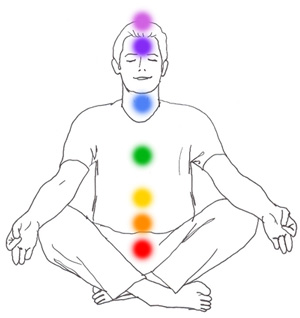The Endocrine System
The endocrine system is the collection of glands that secrete hormones into the blood. The endocrine system works closely with the autonomic system, and when it does, these are termed neuro-endocrine events.
Once secreted a hormone is active for a time even if the situation changes. Hormones are almost always part of a cascade of physiological regulators. Therefore endocrine dysregulation tends to result in 'roller coasters' or positive feedback loops.
In our culture endocrine disorders are epidemic. The disorders for each gland tend to come in pairs: the overstimulated state and the exhausted state. It has been noted that endocrine gland locations tend to correspond both to Reich's segments (and to Hindu Chakras)
| Endocrine Gland | Segment | Chakra |
|---|---|---|
| Pineal | Ocular | Crown (Sahasrara) |
| Pituitary This is the middleman in the hypothalamus-pituitary-adrenal axis (HPA) | Oral | Brow (Anja) |
| Thyroid This is a general regulator of metabolism | Cervical | Throat (Vishuddha) |
| Thymus It is probably very key that the thymus gland is active in childhood and seems to cease function at puberty. It would explain why childhood heartbreak impairs adult loving so severely | Thoracic | Heart (Anahata) |
| Adrenal This is the most downstream member source of fight or flight hormones, but also the source of cortisol, a regulator of immune function and stress. | Diaphragmatic | Solar Plexus (Manipura) |
| Islets of Langerhans (in the pancreas) This is the source of insulin. With rare exceptions diabetes is a disesase of insulin resistence (at least until exhaustion. Treating elevated blood sugars with pharmaceutical insulin where there is too much insulin already of course increases dysregulation further. | Abdominal | Naval (Svadhishthana) |
| Ovaries/Testes ( Segment) This is where sexual function is regulated. | Pelvic | Genital (Muladhara)) |

